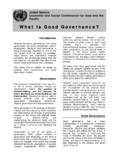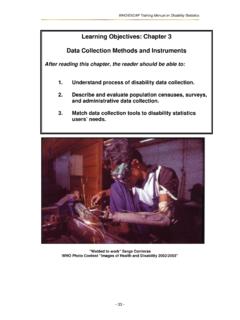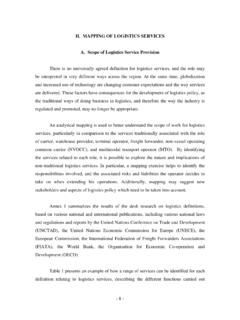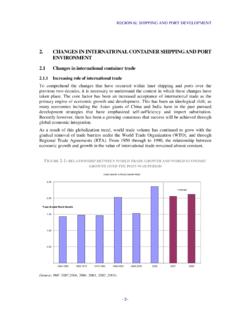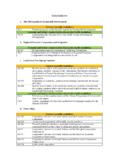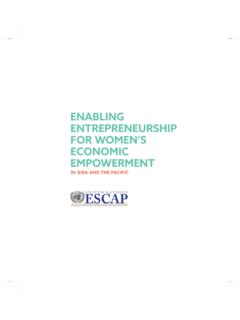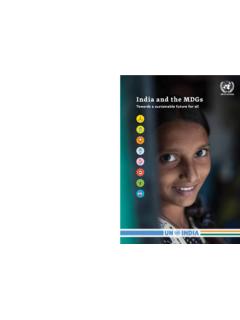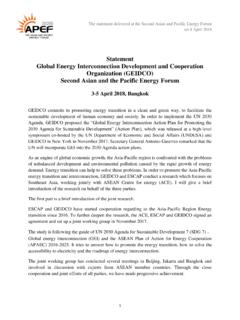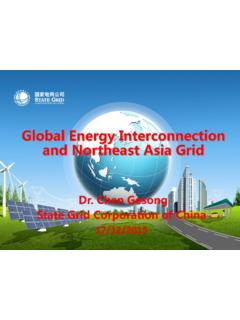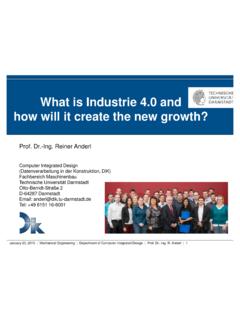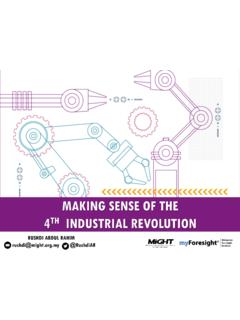Transcription of Final Paper The Impact of Climate Change on the ...
1 LOW CARBON GREEN GROWTH ROADMAP FOR ASIA AND THE PACIFIC [Background Policy Paper ] The Impact of Climate Change on the Agricultural Sector: Implications of the Agro Industry for Low Carbon, Green Growth Strategy and Roadmap for the East Asian Region Prepared by Dr. Chang Gil Kim Korea Rural Economic Institute This publication was prepared as a background policy Paper for the East Asia Low Carbon Green Growth Roadmap project with funding from the Korea International Cooperation Agency (KOICA), under the East Asia Climate Partnership.
2 The designations employed and the presentation of the material in this publication do not imply the expression of any opinion whatsoever on the part of the Secretariat of the United Nations concerning the legal status of any country, territory, city or area, or its authorities, or concerning the delimitation of its frontiers or boundaries. The content and views expressed in this publication are those of the authors and not necessarily reflect the views or policies, or carry the endorsement of any of the co publishing organizations.
3 Reference to a commercial entity or product in this publication does not imply endorsement. The co publishing organizations do not guarantee the accuracy of the data included in this publication and accept no responsibility for any consequence of their use. This publication has been issued without formal editing. 1 Table of Contents 1 Introduction 2 2 Diagnosis and Forecast of Global Climate Change 3 Current Conditions of Global Warming 3 Current Conditions and Forecasts of Global Climate Change 5 3 Impacts of Climate Change on the Agricultural Sector 8 Conceptual Approach 8 Climate Change Impacts on Korean Agriculture 12 Impacts on the Agricultural
4 Ecosystem 12 Impacts on the Agricultural Production 13 Impacts on the Agricultural Economy 14 Climate Change Impacts on Chinese Agriculture 17 Climate Change Impacts on Indian Agriculture 19 4 Mitigation and Adaptation Strategies for the Agriculture 21 Countermeasures against Climate Change 21 Strategies for Climate Change Mitigation 22 Strategies for Climate Change Adaptation 24 Basic Framework for Adaptation 24 Priorities of Adaptation Measures to Climate Change in Korean Agriculture 27 Countermeasures for Climate Change in China 31 5 Low carbon Green Growth Strategy/Roadmap for the Agricultural Sector 34 The Concept of Green Growth 34 Strategies for Green Growth in Agricultural Sector 37 Basic Directions and Implementation Methods 37 Implementation Methods 38 Core Tasks for Implementing Strategies 39 Establishment of a Resource cycling Agricultural System 39 Integration of Agricultural
5 Policy and Low carbon Eco friendly Policy 39 Activation of Climate Smart Agriculture 40 Development and Dissemination of Low Carbon Green Technology 41 Development of Policy Programs Based on Carbon Information 43 Utilization of Green Finance in the Agricultural Sector 44 Education and Communication for Green Growth 44 6 Conclusions and Policy Implications/Options 45 7 References 48 2 1. Introduction Climate Change refers to changes beyond the average atmospheric condition that are caused both by natural factors such as the orbit of earth s revolution , volcanic activities and crustal movements and by artificial factors such as the increase in the concentration of greenhouse gases and aerosol.
6 Climate Change by global warming, which refers to the average increase in global temperature, has become a megatrend that will lead to significant global changes in the future. Concerning its impacts, the UN Intergovernmental Panel on Climate Change (IPCC) presented considerable scientific evidences in its fourth report on Climate Change (2007) and they have become clearly recognized worldwide. In addition, people have become more aware of the fact that global warming cannot be avoided due to the continued increase in greenhouse gas emissions and the changes in the Climate system.
7 The Club of Rome Report 1972 officially raised global warming as an international issue and, in 1985, World Meteorological Organization (WMO) and United Nations Environment Programme (UNEP) officially declared carbon dioxide as the principal cause of global warming. In order to effectively cope with the global warming issue, Intergovernmental Panel on Climate Change (IPCC) was organized in 1988 and has carried out systematic research and in-depth studies on Climate Change . According to the fourth report of UN IPCC (2007) on Climate Change , it is indisputable that global warming has serious impacts on the earth and it is very likely that the increase in greenhouse gas emission by anthropogenic activities has caused global warming since the mid-20th century.
8 Especially, this report warns us that, if mankind continues its present level of consumption of fossil fuels ( , oil and coal), the average temperature of the earth will rise by up to C by the end of the 21st century (2001~2100) and the sea level will rise by 59 . In fact, the average temperature of the earth has risen C over the past 100 years (1906~2005) (Korea Meteorological Agency, 2008). Global warming not only causes a Change in average temperature and precipitation but also increases the frequency of floods, droughts, heat waves, and the intensity of typhoons and hurricanes following the Change in temperature and precipitation patterns.
9 The impacts of Climate Change are also shown in various other forms throughout the world, including the rise of sea level, decrease in glaciers, northward movement of plant habitats, changes in animal habitats, rise of ocean temperature, shortened winter and early arrival of spring. As the acceleration of global warming affects not only ecological systems but also human life, it has become an important issue both nationally and internationally. Approaches to deal with the issue of global warming are divided largely into mitigation measures, focusing on reduction and absorption of greenhouse gases, the causative factors, and adaptation measures to minimize the damages by Climate Change .
10 So far, the global warming issue has focused on the mitigation of greenhouse gases based on international environmental conventions such as IPCC and Kyoto Protocol. For agriculture, 3 however, the focus has been shifted to adaptation and adaptability based on the assessment of the impacts of Climate Change and vulnerability to it. IPCC emphasizes that it is very important for the agricultural sector to adapt to Climate Change . This is because even if greenhouse gas emissions decrease, global warming will still continue for the next several decades due to its previously emitted greenhouse gases.

